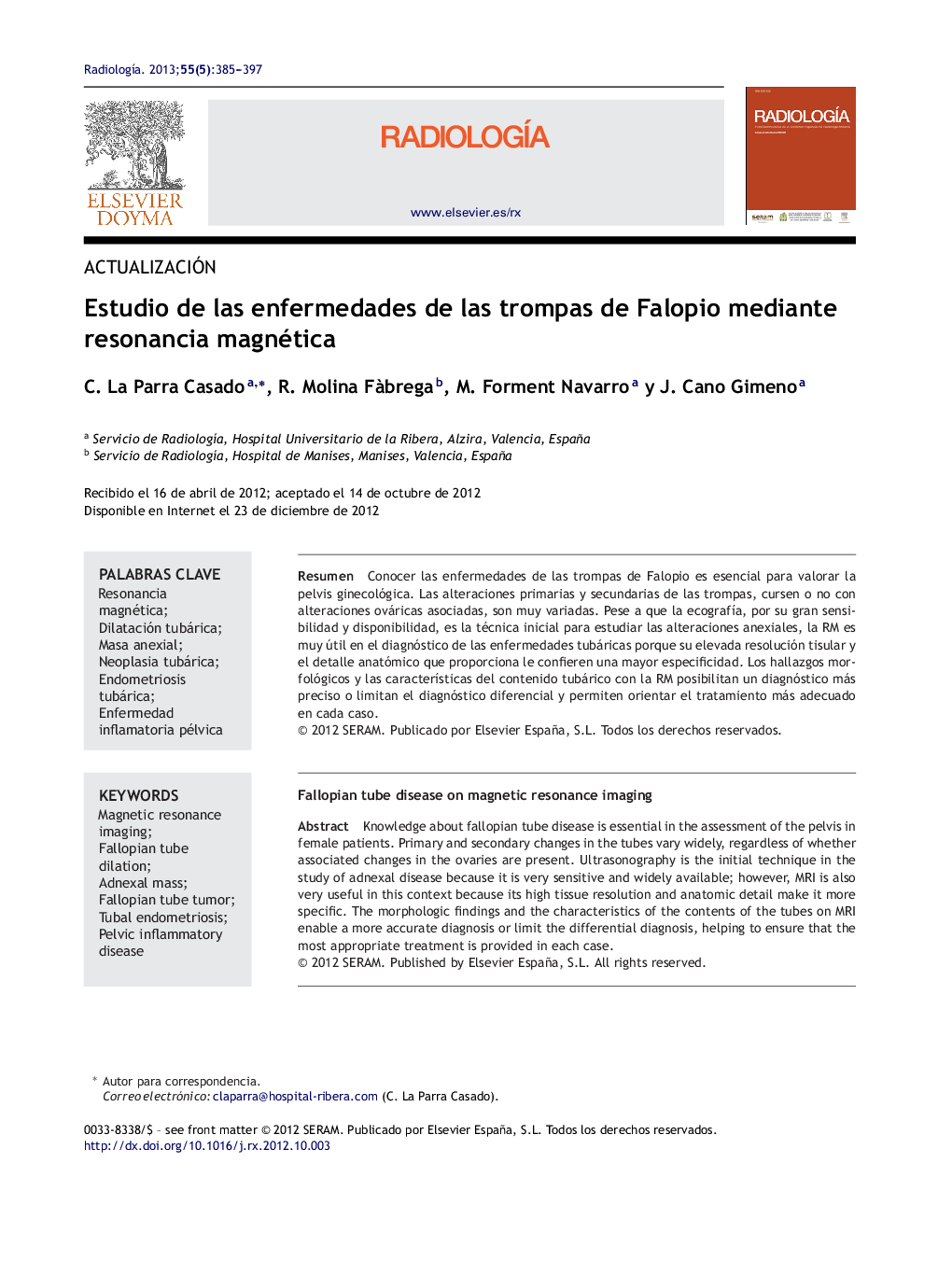| Article ID | Journal | Published Year | Pages | File Type |
|---|---|---|---|---|
| 4245442 | Radiología | 2013 | 13 Pages |
Abstract
Knowledge about fallopian tube disease is essential in the assessment of the pelvis in female patients. Primary and secondary changes in the tubes vary widely, regardless of whether associated changes in the ovaries are present. Ultrasonography is the initial technique in the study of adnexal disease because it is very sensitive and widely available; however, MRI is also very useful in this context because its high tissue resolution and anatomic detail make it more specific. The morphologic findings and the characteristics of the contents of the tubes on MRI enable a more accurate diagnosis or limit the differential diagnosis, helping to ensure that the most appropriate treatment is provided in each case.
Keywords
Related Topics
Health Sciences
Medicine and Dentistry
Radiology and Imaging
Authors
C. La Parra Casado, R. Molina FÃ brega, M. Forment Navarro, J. Cano Gimeno,
